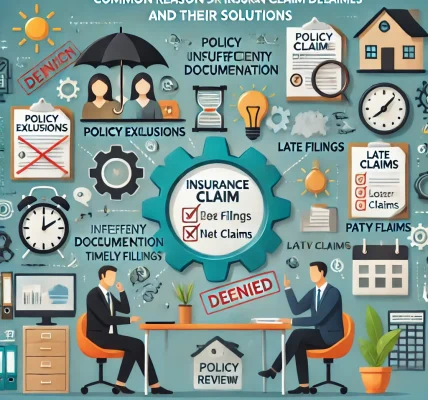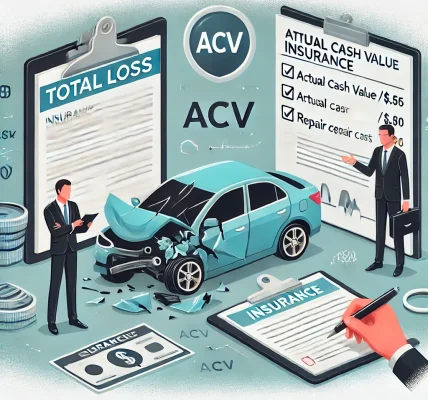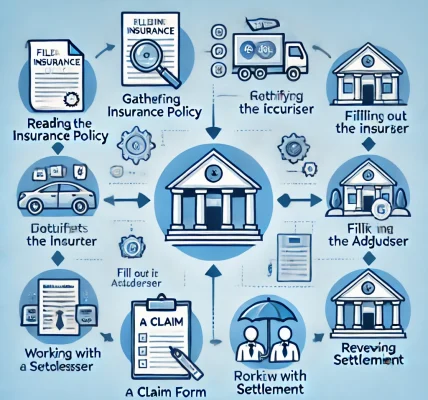The insurance industry is undergoing a significant transformation, thanks to advancements in technology. From AI-driven claim assessments to blockchain-based fraud prevention, modern innovations are making the insurance claims process faster, more efficient, and customer-friendly. If you’ve ever faced delays or complications while filing a claim, this guide will help you understand how technology is changing the landscape and making claims processing more seamless.
1. The Traditional Insurance Claims Process: Challenges and Limitations
Before diving into technological advancements, it’s important to understand the common issues with traditional insurance claims:
- Time-Consuming Paperwork – Claim filing and processing require extensive documentation.
- Lack of Transparency – Customers often struggle to track the status of their claims.
- Fraudulent Claims – Insurance fraud leads to financial losses and delays in genuine claims.
- Human Error – Manual data entry errors can slow down the process.
- Long Processing Times – Assessments and approvals can take weeks or months.
2. The Role of Technology in Modernizing Insurance Claims
With the integration of technology, the insurance claims process has become more automated, transparent, and customer-centric. Let’s explore the major innovations reshaping the industry:
a. Artificial Intelligence (AI) & Machine Learning
- Automated Claims Processing – AI-powered chatbots and virtual assistants guide customers through the claims submission process.
- Fraud Detection – Machine learning algorithms analyze data patterns to identify potential fraud.
- Predictive Analysis – AI can predict claim settlements based on historical data, speeding up approvals.
b. Blockchain Technology
- Fraud Prevention – A decentralized and tamper-proof ledger helps prevent fraudulent activities.
- Smart Contracts – Automatically execute insurance payouts when predefined conditions are met.
- Improved Data Security – Blockchain enhances transparency while safeguarding sensitive customer data.
c. Mobile Applications & Self-Service Portals
- Filing Claims via Mobile Apps – Policyholders can submit claims, upload documents, and track status in real time.
- Instant Communication – Chatbots and AI assistants provide instant responses to queries.
- Document Upload & E-Signatures – Reduces paperwork and accelerates processing.
d. Internet of Things (IoT) & Telematics
- Usage-Based Insurance (UBI) – IoT devices in vehicles track driving behavior to customize insurance premiums.
- Smart Home Devices – Sensors detect damages (e.g., fire, water leakage) and trigger automatic claims.
- Health Monitoring Wearables – Devices like smartwatches help process health insurance claims based on real-time health data.
e. Data Analytics & Cloud Computing
- Real-Time Risk Assessment – AI-powered analytics help insurers evaluate risks quickly.
- Faster Claims Settlements – Cloud-based systems allow instant access to data, expediting approvals.
- Customer Insights – Insurers can offer personalized policies based on user behavior.
3. How Technology is Improving the Customer Experience
a. Faster Claim Approvals
AI-powered automation minimizes human intervention, leading to faster approvals and disbursements.
b. Enhanced Transparency
Customers can track claim progress in real-time via mobile apps and web portals.
c. Reduced Fraud Risks
Blockchain and AI analytics help detect fraudulent claims, ensuring only legitimate cases are processed.
d. Personalized Insurance Plans
With IoT and AI, insurance companies can offer customized plans based on individual needs and behaviors.
e. Seamless Customer Support
Chatbots and virtual assistants provide round-the-clock support, answering queries instantly.
4. Future Trends in Insurance Claims Processing
a. Fully Automated Claims Settlements
With AI advancements, some claims may soon be settled within minutes without human intervention.
b. Expansion of Blockchain Use Cases
More insurers will adopt blockchain to enhance security, prevent fraud, and streamline documentation.
c. AI-Powered Personalized Insurance
Real-time data from wearable devices, cars, and homes will allow insurers to offer dynamic, personalized coverage.
d. Integration with Digital Payments
Instant insurance payouts through digital wallets and cryptocurrencies will become more common.
5. How Policyholders Can Leverage Technology
- Use Mobile Apps – File claims and track progress instantly.
- Opt for AI-Enabled Insurers – Companies leveraging AI offer faster and more accurate settlements.
- Ensure Data Accuracy – Keep your policy details updated to avoid claim rejection.
- Adopt IoT-Based Policies – If possible, opt for policies that use smart devices to enhance claim approvals.
6. Conclusion
Technology is revolutionizing the insurance claims process, making it more efficient, transparent, and user-friendly. AI, blockchain, IoT, and data analytics are eliminating inefficiencies and ensuring quicker claim settlements. As a policyholder, staying informed about these innovations can help you make the most of your insurance coverage.



